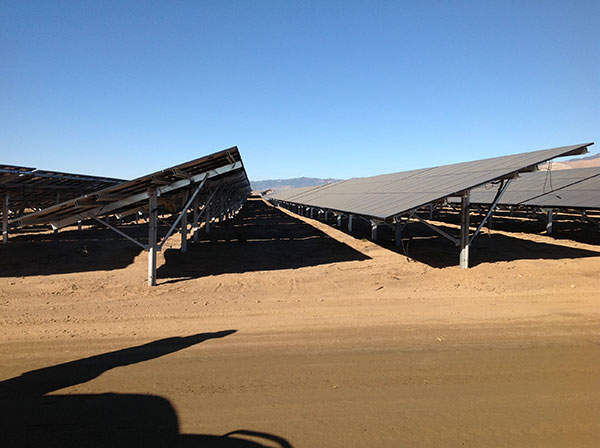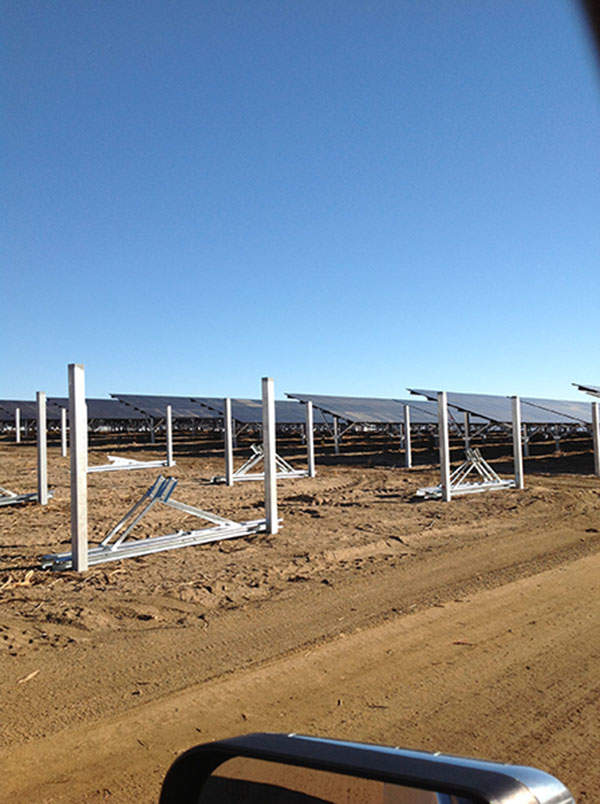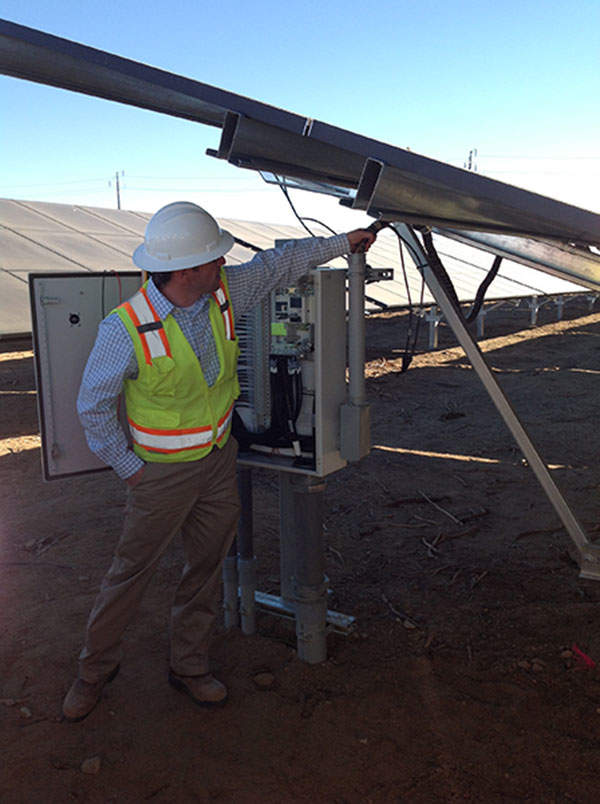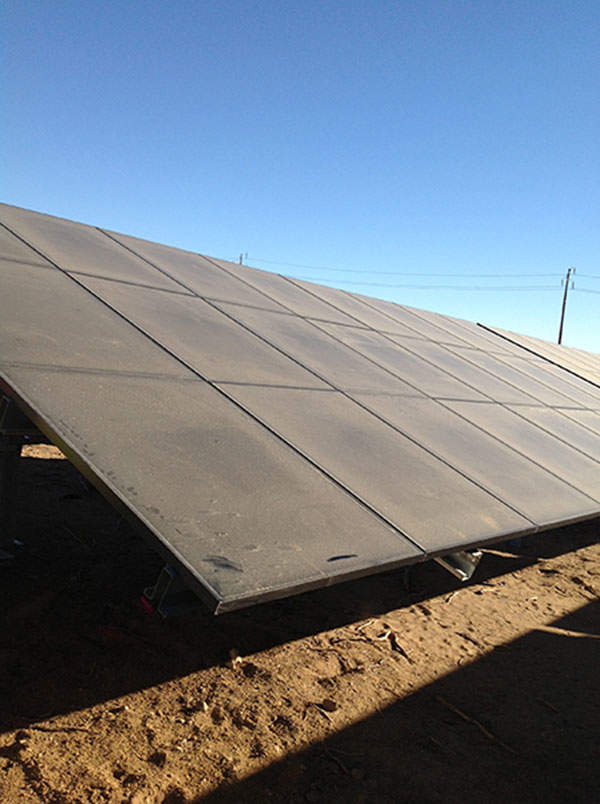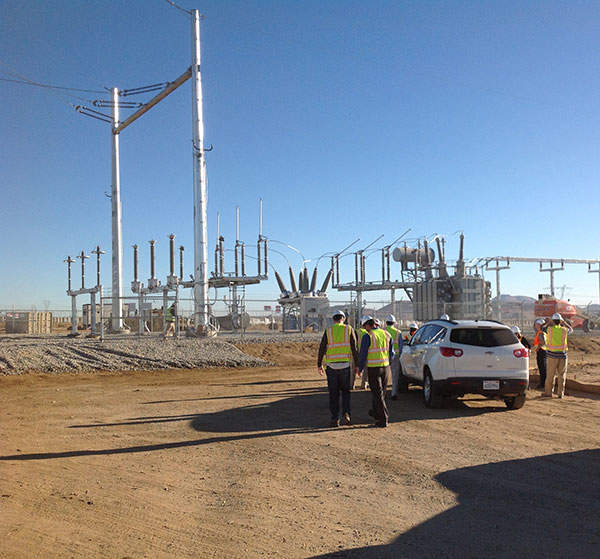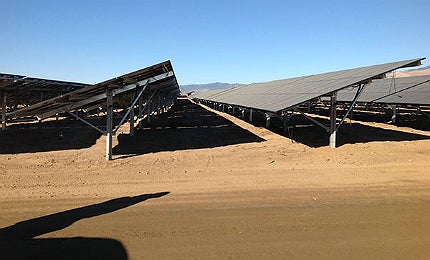The 143MW Catalina Solar Project, located in Kern County of California, was developed by EDF Renewable Energy (formerly known as EnXco).
In January 2013, GE Energy Financial Services, along with MetLife, Union Bank and Citi, acquired a majority stake in the project.
The group also plans to acquire the remaining interest of the project. EDF Renewable Energy is the operator of the project.
The solar photovoltaic (PV) power project was built in two phases. Construction started in May 2012. The 60MW first phase went online in December 2012. The 83MW second phase was dedicated on 27 September 2013.
The Catalina solar project is currently the eighth biggest photovoltaic plant in the world and generates electricity for 35,000 homes while offsetting emissions of around 74,000t of CO2.
In June 2012, EDF Renewable and San Diego Gas & Electric (SDG&E), a subsidiary of Sempra Energy, entered into a 25-year power purchase agreement (PPA), according to which the power generated from the Catalina Solar Project is being sold to SDG&E.
Catalina Solar Project development
Catalina Solar Project was conceived as part of a solar-wind hybrid project proposed by EDF Renewable Energy. The hybrid project generates power from both wind and solar sources in the Tehachapi-Mojave region of Kern County and feed the grid of Southern California Edison (SCE) using shared transmission infrastructure.
Following regulatory approvals, the 140MW wind farm and the immediately adjacent 143MW Catalina Solar Project were started independently. The Pacific Wind Farm became operational in August 2012.
The engineering, procurement and construction (EPC) contract of the Catalina Solar Project was awarded in April 2012.
The financing for the project was secured in January 2013. The solar project became operational in September 2013.
Site choice for EDF Renewable Energy’s solar project
The Catalina Solar Project is developed on 1,100 acres (445ha) of privately owned land, south-west of the Tehachapi and Piute mountains in the Mojave Desert of California.
The project site is located near EDF Renewable Energy’s other projects, such as the 60MW Oasis Wind Project and the 140MW Pacific Wind Project. It also has good proximity to the transmission network.
The Catalina Solar Plant is installed with approximately 1.2 million alternating-current (AC) photovoltaic (PV) modules mounted over ground, with a fixed tilt. It uses central inverters and medium voltage transformers for power conversion.
The produced power is supplied to Southern California Edison Whirlwind Substation through a 7.2 mile (11.6km) double-circuited 230kV transmission line.
Technology used for the Californian energy project
Catalina Solar Project is based on thin film photovoltaic technology. It uses both cadmium telluride (CdTe) and Copper-Indium-Gallium-Selenium (CIGS) photovoltaic modules.
First Solar’s thin film CdTe PV panels account for 61MW of the total installed capacity of Catalina Solar. The remaining 82MW comprise of Solar Frontier’s CIGS thin film PV panels.
CdTe is an established thin film photovoltaic technology offering higher cost-efficiency, compared to crystalline silicon PV. The technology involves placing of semiconductor material composed of cadmium and tellurium in thin layer on to the surface of glass sheet.
CIGS in contrast involves a tetrahedrally bonded semiconductor composed of copper, indium, gallium and selenium. The polycrystalline semiconductor compound is placed onto molybdenum-coated glass sheets. A thin layer of transparent conductor, such as zinc oxide (ZnO) or cadmium sulphide (CdS), is deposited on top of it.
The CIGS semiconductor compound absorbs light, by which free electrons and holes are created. The electrons diffuse in the CIGS grains and create an electric field at the junction from where they are driven into the transparent conducting oxide layer. A voltage is thereby developed between the ZnO/CdS electrode and the molybdenum base electrode.
CIGS panels, similar to CdTe panels, show better resistance to heat compared to silicon-based solar panels. Laboratory tests, however, reveal that CIGS panels have higher efficiency levels than CdTe panels with better absorption capacity and higher current output.
Catalina Solar Project is all set to explore this emerging technology. With CIGS PV panels comprising 82MW of its installed capacity, the solar project is considered to be largest ever CIGS thin film installation.
Contractors and suppliers for the Catalina Solar Project
Bechtel was awarded with the EPC contract of the Catalina Solar Project. It was also responsible for building the transmission line. First Solar was awarded a contract to supply 61MW of thin film CdTe PV panels for the project.
Solar Frontier, a subsidiary of Showa Shell Sekiyu based in Japan, supplied 82MW of CIGS panels for the project.
The solar panels were manufactured in its production facilities in Miyazaki and were delivered in 623 shipping containers. SMA is the supplier of the power conversion system, including the central inverters and transformers.
Related content
Alta Wind Energy Center (AWEC), California, United States of America
Alta Wind Energy Center (AWEC), also known as Mojave Wind Farm, is the second largest onshore wind energy project in the world.
Desert Sunlight Solar Farm, Riverside County, California
Desert Sunlight Solar Farm is a 550MW photovoltaic solar power project being built across 4,100 acres land in Chuckwalla Valley.

